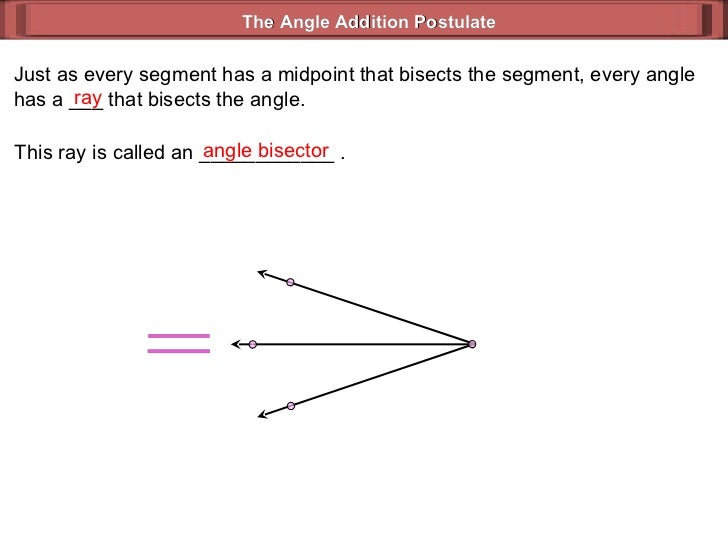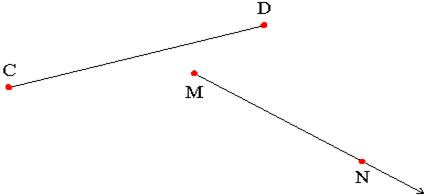

Segment Addition Postulate: If P is between A and B then AB = AP + PB, and conversely. It is sometimes called the Segment Addition Postulate:

For example, if P is a point between A and B, then P splits into the two segments, and, and AB = AP + PB:Ī postulate is implied by the above figure. Segments can be cut into smaller segments, and the lengths of these smaller segments add to the length of the whole segment. If we do not place the bar above the letters of the endpoints, the label represents the length of the segment. When we label segments, we place a bar over the letters of their endpoints, like this.

The length of a segment can be expressed in any of the standard units, such as inches, centimeters, feet, meters, miles, etc. We sometimes express this by saying they have "infinite length." Segments, on the other hand, have fixed endpoints, so they can be measured. An object such as a ray or segment is interior to an angle if all its points other than its vertex or vertices are interior to that angle (a vertex can be interior or on the angle, as long as the other points are interior).įor example, point P is interior to because it is on segment, where D and E are points on the sides of the angle, and the whole segment is also interior:ĭefinition: A point, ray, or segment is exterior to an angle if it is not interior to that angle. Here we review the definitions of certain special angles and properties of angles.ĭefinition: When the rays are the two halves of a line (they point in opposite directions), the angle is called a straight angle:ĭefinition: When the sides of an angle are perpendicular, the angle is called a right angle:ĭefinition: If the measure of the angle is less than 90 o the angle is called an acute angle:ĭefinition: if the measure is more than 90 o the angle is called an obtuse angle:ĭefinition: When a point is the vertex of the angle or on a side of the angle, it is said to be on the angle.ĭefinition: A point is interior to an angle if it lies on some segment with endpoints on the sides of the angle.
Segment addition postulate definition geometry example full#
Since the shorter arc is always used, protractors are usually constructed as semicircles (half circles) instead of full circles, and an angle cannot contain more than 180 degrees. Degrees are determined by drawing a circle centered at the vertex of the angle, placing 360 equally-spaced marks on the circle, and counting the number of marks on the shorter arc of the circle between the sides. The size of an angle depends on how much its sides slant away from each other and is usually measured in degrees. In the above case, we could name the angle as. When there is no confusion, we can also use just the vertex to name an angle.

There are two names we could give the following angle. The vertex-letter is always the middle letter. This means it doesn't matter how long you draw those rays, so the following two angles are really the same size even though they look different:Īngles are sometimes labeled using letters of three points on them, the vertex and one on each side of the angle. The rays are the sides of the angle, and they go on forever. Recall that an angle is made of two rays with a common vertex. The endpoints of segments are called its vertices, and we label segments by specifying the endpoints and placing a line without arrows over these letters. Segments do not go on forever, so we do not put arrows on their ends. The piece that consists of those two points and all the points between them is called a segment. If we choose two distinct points on a line, the line is split into three pieces. Rays are labeled by specifying the vertex and some other point on it, and placing an arrow over these letters. We draw rays with an arrow on one side only, like this: A ray goes on forever, but only in one direction. More precisely, a ray consists of a point on a line, called its vertex, and all points on one side (or half) of that line. If we choose a point on a given line this divides the line into two pieces or "halves." Each half is called a ray. For example, the line that goes through points A and B might be labeled as : Lines are sometimes labeled by indicating two points on them and placing a double arrow over the names of the points (which are capital letters). To indicate that a line goes on forever, we usually draw lines with arrows on both ends, like this: In geometry, a line is straight and goes on forever.


 0 kommentar(er)
0 kommentar(er)
